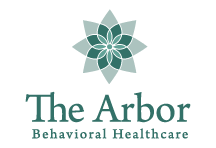Relapse is a return to alcohol or drug use after a period of sobriety. It can be a brief slip, or it can be a longer return to old patterns. Relapse is common, and it does not mean recovery has failed. With the right support, skills, and structure, many people get back on track.
In a recent TikTok video, Dr. Brian Samford, Chief Clinical Officer at The Arbor in Georgetown, TX, shared clear insights on why people relapse and how to prevent it. His message is practical and hopeful, and it speaks to anyone wondering why people relapse and what can be done next.
@dr.brian.samford Dr. Brian Samford shares the most common reasons he’s seen people relapse, and the one that comes up more than any other. #therapy #mentalhealth #addictionrecovery #sobriety #addictiontreatment #sober #recovery #treatment #mentalwellbeing #mentalwellness #addictiontherapy **Disclaimer** The information provided in this video reflects the general clinical opinions of Dr. Samford and is intended for educational and informational purposes only. It is not a substitute for professional medical or mental health advice, diagnosis, or treatment. Every individual’s situation is unique, and viewers should consult with a licensed therapist or healthcare provider familiar with their specific case before making any decisions related to their mental health or treatment. The Arbor does not assume responsibility for any actions taken based on the content of this video.
Common reasons people relapse
Dr. Samford notes three frequent drivers of relapse among people with long term sobriety. First, some “start moving away from that thing that keeps them emotionally and psychologically healthy,” like going to meetings, doing service, or exercising. Second, “unresolved trauma” may surface over time and overwhelm coping skills. Third, an “untreated psychiatric condition” such as depression, anxiety, or another mental health disorder raises risk when it is not effectively managed.
Of the three, he hears one reason most: “they stopped working their program.” As he put it, “I stopped going to those meetings, I stopped doing that volunteer work.” When daily or weekly habits that protect recovery fade, emotional health can slide. “When you get to a point where you are no longer emotionally or psychologically healthy, you get much closer to using again,” because pain often pushes people to medicate feelings.
In addition to those core themes, several patterns commonly raise relapse risk:
- Lack of coping skills to manage stress, grief, anger, or loneliness
- Untreated mental health conditions, including trauma responses
- Environmental and social triggers, such as old friends, familiar places, or high stress events
- Overconfidence or complacency, especially in early recovery
- Lack of structured aftercare or accountability, which can leave people isolated
These factors interact. For example, a stressful event can activate trauma, which disrupts sleep and mood, which makes meetings or healthy routines feel harder, which then reduces accountability. A strong relapse prevention plan addresses each layer, not only substance use.
How The Arbor’s continuum of care in Texas helps prevent relapse
Sustained recovery is easier when care does not end at discharge. At The Arbor, clinicians emphasize continuity of care, so each step builds skills and confidence. As part of the recovery journey, a step-down pathway helps people stabilize, then practice new habits in real life. The progression often includes residential treatment, then outpatient therapy, then sober living or supportive housing, then structured aftercare and alumni connection. The goal is steady progress with support, not sudden changes that feel overwhelming.
Mental health care
Many people benefit from integrated mental health care, sometimes called dual diagnosis treatment. When depression, anxiety, PTSD, or other conditions are treated alongside substance use disorders, people learn safer ways to regulate emotions, improve sleep, and reduce triggers.
Evidence based-therapies that are often used in relapse prevention include Cognitive Behavioral Therapy to change thinking and behavior patterns, Dialectical Behavior Therapy to build emotion regulation and distress tolerance, and trauma therapy to process difficult memories safely. Family education can also reduce conflict and increase support at home.
Support groups
The Arbor team also highlights accountability and connection after formal treatment. Alumni support and peer communities in Austin and Georgetown can help people keep showing up, share wins and setbacks, and rebuild purpose through service.
Program features and availability vary by clinical need, so individuals should speak with a clinician to tailor a plan that fits their goals.
Family and community
Recovery is not a solo project. Family, community, and clinical care all play a role in relapse prevention. Strong support systems help people stick with meetings or therapy, follow through on medication plans when prescribed, and stay connected during stressful times.
At The Arbor, long-term accountability grows through therapist guidance, peer groups, and healthy routines that make recovery part of daily life. Connection lowers isolation, which is a common early warning sign for relapse.
Practical takeaways for families and individuals
Early warning signs often appear before a return to use. Watch for these signals:
- Skipping meetings, therapy sessions, or healthy routines
- Changes in sleep, appetite, or mood
- Withdrawing from supportive people, or reconnecting with old using circles
- Minimizing risks, or talking about “testing” limits
- Rising stress without a clear coping plan
What helps in the moment:
- Return to basics, such as meetings, service, movement, and sleep.
- Talk openly with a therapist or sponsor, sooner rather than later.
- Review triggers, then make a simple written plan for the next 24 to 72 hours.
- Practice coping skills, such as paced breathing, urge surfing, and grounding.
- Ask family or trusted friends for specific help, such as rides to meetings or check-ins
How families can support without taking over:
- Keep communication calm and specific; focus on safety and next steps.
- Encourage treatment contact when needed, and remove easy access to substances.
- Praise effort, not only outcomes, since practice builds confidence.
- Set clear boundaries that protect everyone’s well being.
Preventing relapse
Relapse happens for many reasons, yet the most common story Dr. Samford hears is simple, “they stopped working their program.” Unresolved trauma and untreated mental health conditions also add risk.
Relapse is not a failure; it is a signal that more support is needed. If you or a loved one are wondering why people relapse, consider a steady continuum of care that rebuilds coping skills, treats co-occurring conditions, and strengthens connection. With structure, accountability, and compassion, people can return to recovery and stay there. Contact The Arbor today to learn more.

